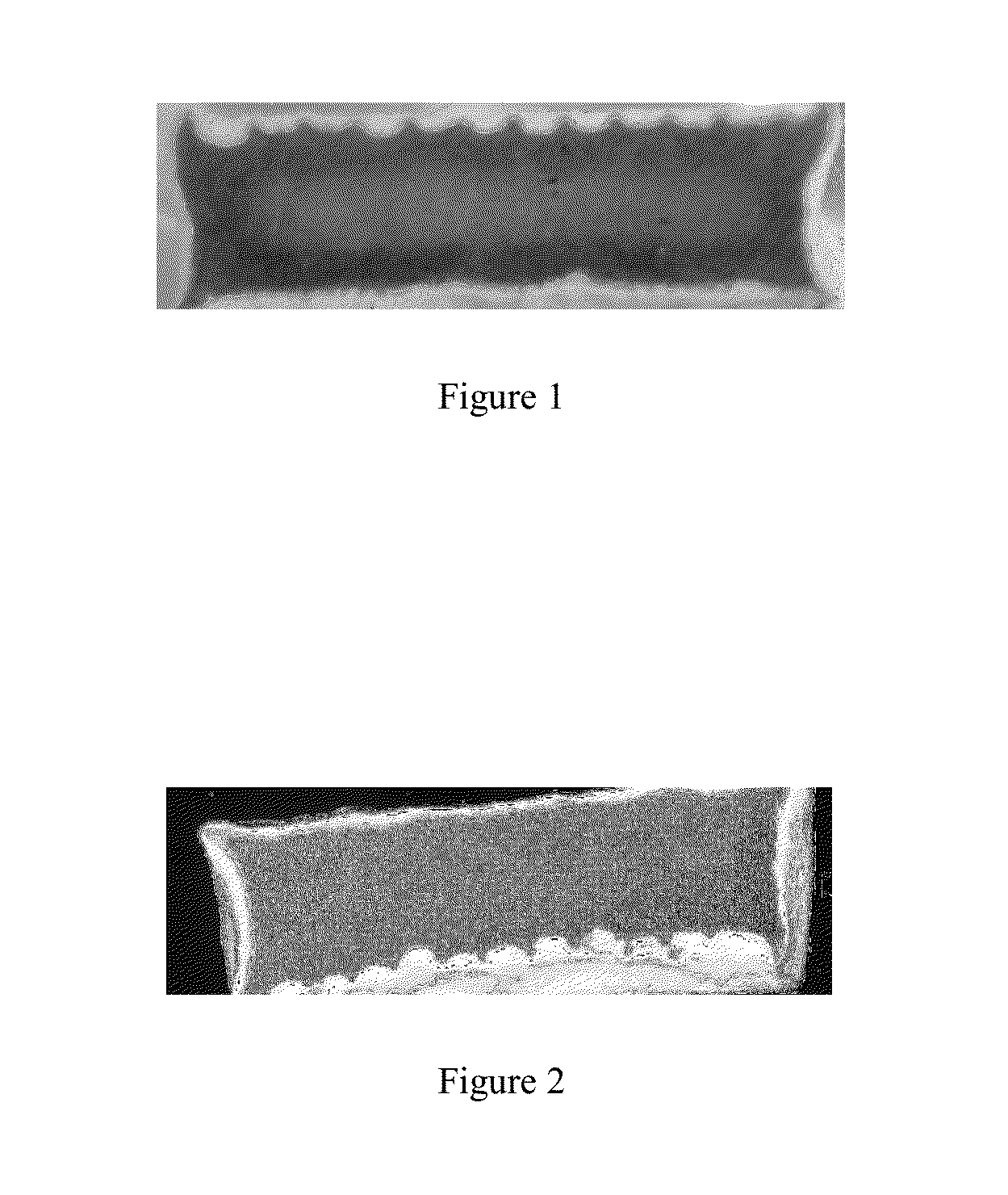Mold Ripened Cheese and Preparation Method Thereof
a technology which is applied in the field of ripened cheese and ripe cheese preparation, can solve the problems of more easily producing bad flavor, and achieve the effects of reducing the ripening cycle, improving the irritant flavor of traditional cheese, and good growth of monascus sp
- Summary
- Abstract
- Description
- Claims
- Application Information
AI Technical Summary
Benefits of technology
Problems solved by technology
Method used
Image
Examples
example 1
[0041](1). 100 L raw milk was sterilized for 15 s at 72° C., and then cooled to 33° C. to give the treated milk. 0.01% freeze-dried spore powder of the Penicillium camemberti, 0.1% culture solution of the Monascus sp., and 1.5 g Lactic acid bacteria fermentation agent were added into the treated milk, which was cultured at a constant temperature of 33° C. till a pH value down to 5.8 and to which was added 1.8 g rennin and was allowed to curdle for 50 min to give curds. The percentages were those accounting for the mass of the raw milk. The amount of the Monascus sp. comprised in the culture solution of the Monascus sp. was 106˜107 cfu / mL.
[0042](2). The curds in the step (1) were placed into the mould, and then with or without suppressing were shaped at 12° C. and rolled-over on time.
[0043](3). The curd blocks were salted with 15% saline, ripened for 10 days at 22° C., continued to be ripened for 5 days at 18° C., followed by ripening for 20 days at 10° C. till completely ripening. T...
example 2
[0045](1). Raw milk was sterilized for 60 s at 70° C., and then cooled to 30° C. to give the treated milk. 0.05% freeze-dried spore powder of the Penicillium camemberti, 0.5% culture solution of the Monascus sp., and 1.5 g Lactic acid bacteria fermentation agent were added into 100 L the treated milk, which was cultured at a constant temperature of 30° C. till a pH value down to 6.5 and to which was added 1.2 g Rennin and was allowed to curdle for 50 min to give curds. The percentages were those accounting for the mass of the raw milk. The amount of the Monascus sp. comprised in the culture solution of the Monascus sp. was 106-107 cfu / mL.
[0046](2). The curds in the step (1) was placed into a mould, and then with or without suppressing was shaped at 20° C. and were rolled-over on time.
[0047](3). The curd blocks was salted with 25% saline, ripened for 5 days at 25° C., continued to be ripened for 10 days at 15° C., followed by ripening for 25 days at 8° C. till completely ripening. Th...
example 3
[0049](1). Raw milk was sterilized for 40 s at 71° C., and then cooled to 31° C. to give the treated milk. 0.025% freeze-dried spore powder of the Penicillium camemberti, 0.25% culture solution of the Monascus sp., and 1.5 g Lactic acid bacteria fermentation agent were added into 100 L of the treated milk, which was cultured at a constant temperature of 31° C. till a pH value down to 6.0 and to which was added 1.5 g Rennin and was allowed to curdle for 45 min to give curds. The percentages were those accounting for the mass of the raw milk. The amount of the Monascus sp. comprised in the culture solution of the Monascus sp. was 106-107 cfu / mL.
[0050](2). The curds in the step (1) were placed into a mould, and then with or without suppressing were shaped at 18° C. and were rolled-over on time.
[0051](3). The curd blocks were salted with 20% saline, ripened for 7 days at 23° C., continued to be ripened for 7 days at 16° C., followed by ripening for 25 days at 9° C. till completely ripen...
PUM
 Login to View More
Login to View More Abstract
Description
Claims
Application Information
 Login to View More
Login to View More - R&D
- Intellectual Property
- Life Sciences
- Materials
- Tech Scout
- Unparalleled Data Quality
- Higher Quality Content
- 60% Fewer Hallucinations
Browse by: Latest US Patents, China's latest patents, Technical Efficacy Thesaurus, Application Domain, Technology Topic, Popular Technical Reports.
© 2025 PatSnap. All rights reserved.Legal|Privacy policy|Modern Slavery Act Transparency Statement|Sitemap|About US| Contact US: help@patsnap.com

